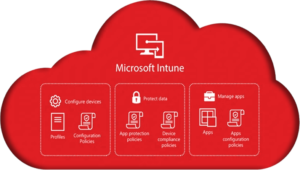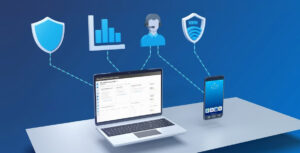Has your organization been managing its data with Microsoft SharePoint over the years and facing the challenge of data accumulation? Is your on-premises storage capacity running out? If so, this might be the right time to migrate to SharePoint & One Drive. It’s Microsoft’s Cloud environment.
Also, if you have been using local servers to store data, you may need to migrate to SharePoint & OneDrive to ensure better business performance and security. This cloud environment allows seamless access and cheaper maintenance.
In this comprehensive guide, we’ll walk you through the best practices for such transitioning. We’ll see how to ensure a smooth migration that minimizes disruption and maximizes efficiency.
Whether you’re considering the latest SharePoint migration tools, exploring SharePoint Online, or simply looking for expert advice on making the move to SharePoint, we’ve got you covered.
Let’s dive in by first tackling the elephant in the room…
Why migrate to SharePoint & One Drive?
✓ You may already have plans to migrate to SharePoint, disrupted by the pandemic.
✓ VPN access to on-premises file shares has not really been user-friendly.
✓ You want to save costs on expired subscriptions to third-party cloud storage.
✓ You want seamless integration with Microsoft Teams.
✓ You want such Governance and Compliance policies that can be applied across Teams, SharePoint, and OneDrive.
✓ You want secure sharing policies configuration.
✓ You want Microsoft-enabled protection for sensitive data classification.
✓ Implementation of information barriers for conflict prevention.
✓ You want to monitor all the shared content to ensure the reliable security of your organization’s operations.
✓ You need detailed audit logs and reports in the Microsoft 365 Security and Compliance Center.
✓ You need to track user activity tracking at folder, file, and user levels.
✓ You want to have real-time device visibility and control for breach prevention.
But, what’s the difference between these two services?
When Should You Migrate to SharePoint and OneDrive?
First of all, you need to understand the differences between SharePoint and One Drive…
If you want to gain clarity regarding how your files should be migrated and to which environment they should, you need to know how Sharepoint & One Drive interact and complement each other’s capabilities.
For example, if a file has so widespread and generalized use that many users need to use it, you may need to migrate to SharePoint. This is because sharing it from OneDrive won’t be as easy.
Whereas, if a file needs to be accessed by only one or a few users, migrate it to One Drive.
It all depends on the use case.

SharePoint Online Migration
Why migrate to SharePoint Online?
By migrating to SharePoint Online, you can skip tasks like data backup, SharePoint patches, and maintenance.
Your IT team will be grateful to you for the decision as it will let them focus on the business instead of spending hours on supporting dated technologies.
Determine the Right Time for SharePoint Migration
Okay, what’s the right time to migrate to SharePoint and OneDrive?
Here are the factors to consider
What are your business needs when you say you want to migrate to SharePoint?
Do you need to improve your collaboration or document management? Or do you want to innovate your workflow automation?
Once you understand your needs, you can assess how the combo of these services can help you meet those needs.
- What’s your budget for the SharePoint migration service?
The cost of SharePoint migration service will vary. Of course, it depends on the size and complexity of your environment. - How much data do you need to migrate? This amount will also affect both the cost and timeline.
So, when you feel that you have a clear understanding of your business needs, budget, and amount of data, it’s time.
- Keep your business cycles in mind. Avoid migrating during busy times of the year i.e. peak sales season, tax season, etc.
- Do not plan migrations when system outages are scheduled. Adjust accordingly.
- Make sure your key employees are available to help with the migration. They should be there to train junior employees as well.
- If you are merging with another company, a migration can help you integrate your systems.
- You are moving to a new office. You can reduce your reliance on physical servers.
- You are upgrading your IT. You can integrate SharePoint and OneDrive with ERP, CRM, etc.
Still, if you need help migrating to Sharepoint and OneDrive, consult with an expert.
Creating a Roadmap for Effortless SharePoint and OneDrive Migration
To migrate to SharePoint, you need a well-thought-out roadmap.
To kick things off, take a close look at where you’re currently at.
Understand your existing data, systems, and processes. Determine what’s vital, what can be archived or deleted, and who needs to be in the loop.
This initial phase will give you a grip on the scope of SharePoint Online Migration.
Define your migration’s objectives and goals clearly
Are you eyeing more collaboration? Or is it beefed-up data security or streamlined document handling? Knowing precisely what you’re after will guide your choices throughout this migration.
Involve the Right People
Collaboration and communication is key. Early on, bring in key players, department heads, and IT people. Seek their input and address any concerns or expectations.
A united front ensures everyone is on board for the migration to SharePoint & OneDrive.
Choose SharePoint Migration Tools Wisely
Opt for the tools and resources that fit your migration needs best. SharePoint and OneDrive offer an array of features and setups, so make choices that align with your goals.
Think about whether you’ll need third-party migration tools or professional assistance.
Prepare Your Data and Get Organized
Before you migrate to SharePoint, clean up and organize your data first.
Delete duplicates, outdated files, and stuff that’s no longer needed. Establish a consistent naming system and folder structure for post-migration ease.
What to keep and what to delete? We talk about that later.
Sort and Classify Your Data
Categorize your data based on its importance and sensitivity. Decide what should migrate to SharePoint or OneDrive and what can be archived or deleted.
This step keeps your data’s integrity and security intact during the migration.
For a bird’s eye view of migration destination planning:
- For migrating files-oriented automated processes, you’ll need to first integrate those processes with M365. Then, you can migrate the whole automation. For this purpose, you can get help from SharePoint Framework Solutions or Power Platform.
- To migrate SharePoint Server 2010 workflows, you need to shift them to Power Automate. You can use the native SharePoint Migration Tool for that.
- If any users have not started using OneDrive as yet and you are going to migrate their personal work files, you will have to pre-provision their OneDrive libraries. And, for each of them.
- And, if their work files are stored in on-prem SharePoint Server, OneDrive, or MySites, migrate them all to Microsoft 365. Use any SharePoint migration tool.
Trial Runs and Pilot Migrations
Before the big move, carry out thorough testing and a pilot migration.
This helps catch any issues or compatibility glitches early. It also provides a chance to train your users and gather their thoughts for necessary tweaks.
Plan Comprehensive User Training Sessions
Teach your team how to harness SharePoint and OneDrive’s power effectively. Highlighting the benefits and features that amp up their daily work. Inspire adoption with success stories and top tips.
Back It Up and Be Ready for Recovery
You’ll need to have a robust backup and recovery plan to keep your data safe before and after the migration. Be sure about your backup plans too.
Get Rid of Unnecessary Items
As you gear up to migrate to SharePoint and OneDrive, one critical step is getting rid of unnecessary items.
You need to declutter and simplify your data before taking the plunge.
Identify Redundancies
Start by looking for duplicate files, folders, and documents that serve no real purpose.
Remove Outdated Content
Don’t let obsolete data weigh you down. Identify and remove outdated files, records, and documents that are no longer relevant to your organization’s current operations.

Archive Instead of Migrate
Some data may not need to be migrated at all. Consider archiving data that’s rarely accessed or has historical value but isn’t actively used in day-to-day operations.
Consult Stakeholders
Engage with key stakeholders to determine what data can be left behind. Their input can help you prioritize essential content and discard non-essential items.
Data Cleaning Tools
Leverage SharePoint migration tools and services to assist in data cleanup. These tools can help automate the identification and removal of unnecessary items.
File Version Cleanup
Review file versions and eliminate older versions that are no longer needed. This not only reduces clutter but also optimizes storage space.
Review Permissions
Assess and streamline permissions for documents and folders. Remove access for users who no longer require it, ensuring tighter control of your data.
Data Retention Policies
Implement data retention policies to automatically delete or archive data after a specified period. This helps maintain a lean and efficient data environment.
Packaging Your Data for a Smooth Migration
To ensure a seamless transition to SharePoint and OneDrive, it’s crucial to package your data effectively.
Create well-defined folders
Organize your data into clear, well-defined folders. Make it easier for users to find what they need post-migration.
Maintain consistency in file naming conventions
Identify and prioritize critical data that must be migrated first. Ensure that essential files are readily accessible during and after the migration.
More things to do:
- Use metadata tags to categorize and label documents. This allows for more precise search capabilities within SharePoint and OneDrive.
- Review unnecessary permissions for each document or folder.
- Back up your data to safeguard against any unforeseen issues during the process.
- Choose the Right SharePoint Migration Tools that align with your specific data packaging needs.
SharePoint Migration Workflows: A Key Investment for SharePoint and OneDrive Migration
What are the best practices to optimize your migration workflows? How can you make the best out of the migration process?
- Use SharePoint Online Workflows to automate the approval process for new documents.
- Use OneDrive to share files with clients and partners.
- Use the SharePoint mobile app to approve documents on the go.
Start by identifying existing workflow bottlenecks and pain points within your organization. Engage with key stakeholders and team members to gain insights into workflow challenges and gather suggestions for improvement.
- Explore the robust native features i.e. document collaboration, version control, and task management.
- Ensure that your team is well-versed in using SharePoint and OneDrive to support enhanced workflows.
- Document your workflows clearly to create a reference guide for your team.
- Explore third-party tools and integrations that can enhance your workflows.
- Use metrics to quantify the benefits and identify areas for further enhancement.
Trial Run Before the Actual Migration to SharePoint
It’s crucial to test the waters before you set off…
A trial migration prepares you for a successful SharePoint and OneDrive migration. You can identify and address potential issues before they impact your organization.
The insights gained from this trial enable you to fine-tune your migration plan.
- For your test run, select a manageable subset of data. This will help you gauge the migration process without overwhelming your resources.
- Make use of reliable SharePoint migration tools for your trial migration. We talk about some dependable SharePoint migration tools as you follow.
- Simulate real-world scenarios during your test run. This includes considering user access, permissions, and document interactions.
- Assess the integrity of your migrated data. Verify that file structures, metadata, and permissions are retained accurately.
- Keep an eye on the performance of the SharePoint migration tools and the overall process. Identify any potential slowdowns.
- Gather feedback from users involved in the test migration.
- If any issues arise during the test migration, document them and develop strategies to resolve them. This proactive approach will prevent similar problems during the actual migration.
- Based on the results of the trial migration and user feedback, adjust your migration plan and timeline as needed.
- If you make changes or fixes, conduct additional test runs to ensure that the issues have been successfully resolved.
- Maintain comprehensive documentation of the test run. This documentation will serve as a valuable resource during the actual migration.
SharePoint Migration Tools
There are a plethora of SharePoint migration tools roaming on the market. They all have different pros and cons and require you to have some kind of professional grip to bear fruit.
However, choosing a tool based solely on its cost or positive reviews is a mistake as different options are better suited for specific challenges.
The best course is to compare the various SharePoint migration tools and find where each is best applied.
Let’s first discuss the automatic choice, the native one.
SharePoint Migration Tool for SharePoint and OneDrive
SPMT is a native SharePoint migration tool by Microsoft itself. But that doesn’t mean it’s all sunshine and rainbows. Despite its scanning and reporting capabilities being good and its standard utility being to migrate your SharePoint objects while preserving navigation, taxonomy groups, etc., the tool has some serious cons.
With this SharePoint migration tool, migrating custom code is simply an awful experience. The whole community testifies that. Plus, any third-party workflows connected with your environment? They won’t migrate. Beware.
The tool also doesn’t support bulk editing. So, even if you are using this native SharePoint migration tool to migrate to SharePoint, getting professional help is the key.
Top Five SharePoint Migration Tools
Here are some other 5 SharePoint Migration tools of 2023. They all serve a purpose and can help with small-scale migrations so that you can do it on your own.
However, all of them have such downsides that any large-scale migration depending solely on their use without any professional assistance is not likely to bear fruit.
- AvePoint Online Services is a famous SharePoint Migration tool that covers so much from Migration and Backup & Recovery to Governance and Reporting. However, it is expensive, and some of its features are extremely complex to use.
- MetaVisio, another SharePoint Migration tool, provides insights into user activity, content usage, and site performance. Still, you can’t generate all kinds of reports in it. Plus, it’s another expensive as well.
- Colligo Migrate is easy to use and can migrate a wide range of SharePoint content. But it is slow for large migrations. Plus, it may not be able to migrate all types of SharePoint content.
- SkySync can synchronize SharePoint content with a variety of cloud storage platforms. However, it can be very costly for large deployments and may not be reliable for all types of SharePoint content.
- Nintex Workflow is another SharePoint Migration tool with its powerful workflow automation tool and a variety of templates. Its downside is its usage complexity.
The Final Word
In conclusion, migrating to SharePoint and OneDrive can transform your organization’s digital landscape.
By following the steps outlined in this guide, you can ensure a smooth and efficient transition. Remember to plan, declutter, package, and optimize. Testing is crucial before the big move.
With these best practices, you’ll be well-prepared to harness the full potential of SharePoint and OneDrive.
WME SharePoint Migration Services
Looking for expert guidance and hands-on support for your SharePoint and OneDrive migration?
Look no further than WME’s SharePoint Migration Services!
At WME, we specialize in helping organizations seamlessly migrate to SharePoint and OneDrive. We leverage our extensive experience and deep knowledge of these platforms to provide you with
✅ SharePoint migration
✅ SharePoint configuration
✅ SharePoint governance
✅ SharePoint support
Our dedicated team of experts is here to assist you at every step of the migration process. From planning and assessment to execution and post-migration support, we cover everything.
Contact us today: sales@winmgmtexperts.com







